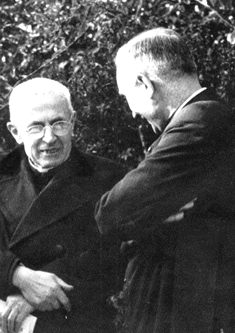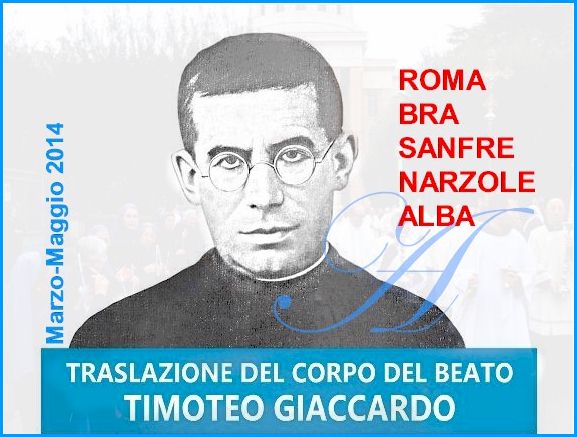NOTIZIE 9
Circoscrizioni 0
Australia 11
Notizie
Brasile 168
Notizie
Canada-Francia 8
Notizie
Colombia-Ecuador-Panama 73
Notizie
Corea 42
Notizie
Filippine-Macau 126
Notizie
Giappone 39
Notizie
India-Gran Bretagna-Irlanda 161
Notizie
Italia 211
Notizie
Messico-Cuba 95
Notizie
Nigeria 24
Notizie
Perù-Bolivia 10
Notizie
Polonia-Ucraina 63
Notizie
Portogallo 67
Notizie
R.D. Congo 95
Notizie
Spagna 63
Notizie
Stati Uniti 25
Notizie
Venezuela 41
Notizie
DOVE SIAMO 2
AFRICA 0
INDIA-GRAN BRETAGNA-IRLANDA 0
Storia
Brief History of Society of St Paul
The first two Paulines, Fr Domenico Ambrosio and Fr Guido Paganini arrived in Bombay by the Italian liner Victoria on April 10, 1935. But they could not stay long in Bombay as the Archdiocese was not open to religious other than the Jesuits.

After several attempts to get admitted into a diocese, they were allowed to stay in Delhi till they are admitted into another diocese. Here they maintained themselves by their hard work with a treadle machine. In December 1936 Fr Paganini left for Japan. He was replaced with Fr Vico Anselm who after a few months became sick and returned to Italy.
On August 2, 1937, Fr Alfonso Ferrero arrived in Bombay and rushed to Delhi to meet Fr Ambrosio before he left for South America. He found a new house in Court Road in the Civil Lines. There was a garage which soon became our mini-press with a treadle machine and a few sets of types. In October, 1937, two more paulines arrived – Fr Gabriel Colasanto and Br Bernardino Ruffoli.
In March 1938, Fr Alfonso Ferrero visited several Bishops with the hope of finding a place to settle down. Finally, Mons. Angelo Poli, the Bishop of Allahabad, was willing to accept us on the recommendation of Mons. De Vito, the then Rector of St Joseph’s Seminary, Allahabad. Bishop Poli offered us the Mission at Fidelispur, now known as Ranipur. However, Fr Ferrero was not impressed with the offer. On 13th October in 1938, Archbishop Mullighan officially admitted them into the diocese of Delhi.
Soon a difficulty arose: Italy sided with Germany in the second world war and the British authorities in Delhi began to grow suspicious of Italian Missionaries. Finally, they accepted the offer of Bishop Poli and moved to Allahabad on 21st June, 1939, and settled down at Fidelispur. Soon they recruited the first batch of aspirants from India.
In October 1939 Germany declared war on England and later Italy joined Germany. On 14th June 1940, Fr Alfonso Ferrero, being an Italian citizen, was arrested and brought to Agra, and later to Ahamednagar. Br Bernardino lost contact with the aspirants who were in holidays. He could not remain alone at Fidelispur. He became secretary to the Bishop and stayed at the Bishop’s house. Soon, the Bishop too was arrested along with Br Bernardino.
As the war got over in 1945, Bishop Poli and Br Bernardino were freed. Fr Ferrero was retained in the camp along with fifty other Missionaries for another year.
When they returned after the war, there was nothing left at Fidelispur. The house was occupied by refugees from Burma. All our belongings, including the mini-press, had disappeared.
In the winter of 1948-49 Fr Colasanto returned after his treatment. In the beginning of 1948 Br Pio Rizzo came, followed by Fr Bellanzon. They recruited a few aspirants, and thus once again we revived the regular Pauline life. In 1949 our founder, Blessed Giacomo Alberione (Primo Maestro) made his first visit to India. On 19 April, 1950 another member was added, Fr Ettore Diamantini.
In 1948 Mons. Valerian Gracias was elected Archbishop of Bombay and he invited Paulines to Bombay, requesting them to take over the Examiner Press Bookshop.
On 11th November, 1951, two more members arrived – Frs Maurus Ferrero to Bombay and Antonio Rossi to Allahabad. Fr Attilio Tempra came in February 1952 and was stationed in Bombay.
In 1953 Fr Diamantini came to Bombay to look after the formation of the aspirants. Around Christmas Br Pio also came to Bombay to manage the Bookshop which he did till he left for Ireland in 1981.
In 1955 Primo Maestro came on a second visit to India and his last visit was in 1963.
On 20 October, 1959, the first Indian Pauline Brothers (Timothy Tirkey, Angelo Pullokaran and Thomas Cornelio) made their perpetual profession and on 01 July, 1962 the first Indian Pauline priests (Albert Rego and Paul Vechoor) were ordained.
On 30 June, 1965, Society of St Paul, India, became a Province and Fr Alfonso Ferrero was appointed the first Provincial.
Eventually, Society of St Paul was spread to different parts of the country:
- New Delhi: In 1964 Fr Tempra and Br Angelo Pullokaran went to New Delhi.
- Bangalore (Karnataka): In 1968, Fr Gabriel Colasanto and Br Basil Chennamkulath were sent to pioneer the community of Bangalore.
- Madras (Tamil Nadu): In 1972 Fr Paul Maruthanakuzhy and Br Carmel Kizhakel sowed the seed of the community of Madras.
- Ernakulam (Kerala): In 1976 Br Carmel Kizhakel and Fr Abraham Nedumpuram pioneered the community of Ernakulam.
- Coimbatore (Tamil Nadu): The community of Coimbatore was inaugurated on 20th August 1982, with Fr Paul Maruthanakuzhy and Br Pancratius Tirkey as pioneers. This community was closed down in 1992.
- Calicut (Kerala): On 30 September, 1984, Fr Augustine and Br Leo Kocheelath were sent to open the community.
- Eluru (Andhra Pradesh): In December 1984, Fr Jose Pottayil pioneered the community of Eluru, which was later closed down on 9 June, 2001.
- Pune (Maharastra): On 26 November, 1988, Fr Vincent Gnarakatt, Fr Vincent Carmelbhavan pioneered the community of Pune.
- Jorhat (Assam): On 5 September, 1991 Br Jesudass and Fr Joe Narivelil were sent to Jorhat.
- Ibadan (Nigeria): On 6 October, 1991, Fr Renato Perino sent Br Basil Chennamkulam and Fr Leo Botavara III to Ibadan to initiate a new opening in Nigeria. The community was formally opened on 26 November, 1991. By a Decree dated 21 December 1995, Superior General Fr Silvio Pignotti instructed that Nigeria be part of the Indian Province with effect from 1 July 1996. An extension to this community was inaugurated at Enugu, on 3 November, 2007.
- Vijayawada (Andhra Pradesh): On 1 July, 1992, Fr Emmanuel became the pioneer of Vijayawada.
- Ranchi (Jharkhand): On 26 September, 2004, the house or Ranchi was blessed. Br Leo and Br Dungdung were the pioneers.
- Guwahati (Assam): On 22 October, 2006, the community of Guwahati was erected. Fr Vincent Carmelbhavan pioneered the project.
- Jalandhar (Punjab): The community was formally erected by the decree of 25 January, 2008.
Today the Indian Province of the Society of St Paul consists of 153 members in 14 communities and overseas. We spread the message of Christ to the 103 crores of God’s people spread in 33 states of the Indian subcontinent and 12 crores of Nigeria through:
16 Book-Centres
3 Mobile Book-Centres
5 Whole-Sale Distribution Centres
Book-fairs and Book Exhibitions
An Outstanding Publishing House
8 Regional Language Publications
2 Modern Presses
5 Periodicals
Mini-Media Products
Audio-Visual Products
2 Parishes
Members of Society of St Paul, India, also serve overseas in 7 countries (Australia, Canada, England, Ireland, Italy, Nigeria and USA).
"The history of the Society of St Paul in India is a history of hardships and difficulties. But it is also a history of innumerable blessings of God, who in spite of our many errors and evident limitations has been very generous and merciful towards us. To Him be our thanks, in all humility. In him we trust for the future” (Fr Alfonso Ferrero)."
AMERICA 0
BRASILE 0
Storia
Ser São Paulo vivo, na sociedade brasileira
Lançar-se para frente
Se muitas instituições religiosas utilizam-se dos meios de comunicação como ferramenta na missão, para nós, Paulinos, eles não são um apêndice, mas a nossa forma específica de atuar na Igreja e no mundo. Fundada em 20 de agosto de 1914, para a obra da boa imprensa, a Pia Sociedade de São Paulo, congregação religiosa de vida apostólica, assumiu paulatinamente, sob a orientação do fundador, o bem-aventurado Tiago Alberione, a evangelização com os meios de comunicação social. Pela índole de sua missão, terá sempre diante de si o desafio de estar atenta aos sinais dos tempos, aceitando, e fazendo seu, qualquer outro meio mais célere e eficaz que a inteligência humana descobrir.
(Don Giacomo Alberione, che tiene in mano alcuni fogli, conversa con don Saverio Boano)
Os primeiros Paulinos, os Padres Francisco Xavier Boano (1904-1990) e Sebastião Trosso (1894-1952) chegaram ao Brasil em 20 de agosto de 1931, instalando-se em São Paulo. Logo adquiriram dos Capuchinhos da Província da Imaculada Conceição o semanário religioso-político La Squilla, que passou a se chamar A imprensa. Com a compra de uma pequena tipografia, iniciaram a impressão de livros e folhetos, que logo receberam a marca Edições Paulinas. Começaram, então, a chegar as primeiras vocações, as comunidades se ampliaram e, no decorrer dos anos, o apostolado paulino foi se desenvolvendo, ampliando as áreas editorial, de produção e de difusão, e passando, em 1994, a denominar seus produtos com a marca PAULUS. No final da década de 90 entrou na era digital, com a construção do site na web e alguns produtos nessa versão, dentre eles, a Bíblia Pastoral.
A partir do ano 2005, a província brasileira deu importante passo na sua história, entrando no campo da educação, com a Faculdade PAULUS de Tecnologia e Comunicação (FAPCOM). A FAPCOM nasceu da consciência de que “além de empregar os meios de comunicação social com a finalidade evangelizadora, é também nosso dever formar os usuários a se servirem deles para a própria formação, para a sã distensão e para a elevação espiritual” e que é “dever importante de nosso apostolado a promoção da escolha e preparação de guias apostólicos de opinião, bem como dos promotores da comunicação social, dos quais depende o valor positivo ou negativo das mensagens que chegam aos receptores”.
A FAPCOM, a Editora Multimedial, as 29 livrarias PAULUS e a Radiodifusão fazem parte de uma única organização, cuja missão não se restringe em “tratar somente de religião, mas falar de tudo cristãmente; à semelhança de uma universidade católica que, se for completa, leciona teologia, filosofia, letras, medicina, economia, política, ciências naturais etc., tudo entretanto apresentado de maneira cristã”. Conscientes dessa responsabilidade, possamos “ser criativos e audazes como são Paulo e o bem-aventurado Tiago Alberione, assumindo progressiva e decididamente em nosso apostolado específico as novas linguagens e as novas formas de comunicação”.
Outro aspecto de nossa instituição, ligado profundamente à nossa missão específica de evangelizar na cultura de comunicação, são os projetos voltados à filantropia. Sobre este aspecto, cresce em nós a consciência de que filantropia não é apenas uma obrigação frente ao governo federal, mas é uma forma de colocar os nossos recursos a serviço dos pobres, participando ativamente na defesa e promoção da vida, da justiça e da paz, colaborando com outras organizações religiosas ou civis. É o serviço que podemos prestar a nossa sociedade, carente de respeito à cidadania e desejosa de acabar com a exclusão, à miséria e a violência.
Empreendedores como Paulo e Alberione
A tarefa de humanizar para evangelizar, exige, hoje, capacidade de empreendimento. O empreendedor tem como característica básica o espírito criativo e pesquisador. É alguém que está constantemente buscando novos caminhos e novas soluções, sempre tendo em vista as necessidades das pessoas. Neste sentido, Paulo e Alberione são dois grandes empreendedores do cristianismo que buscaram viver o Evangelho no seu tempo e criaram estratégias para anunciá-lo a todas as pessoas, mostrando-nos que o ideal de humanizar para evangelizar passa, necessariamente, também pela organização.
Enquanto pessoas consagradas à evangelização na cultura da comunicação, os Paulinos não podemos ignorar que somos uma organização. Pe. Tiago Alberione, que acompanhou de perto o desenvolvimento de nossa Congregação, tinha consciência da necessidade de organizar o apostolado. Afirmava que é no momento em que estamos que nos toca viver e agir, procurando compreender as necessidades e provendo-nos. Para ele, “isto é fácil porque Deus nos deu um temperamento, costumes em relação ao nosso tempo e não aos tempos passados... Hoje, o importante é a organização; então organizemos o bem”.
Cronologia do apostolado paulino no Brasil
1931 – 20 de agosto: Os Padres Francisco Xavier Boano e Sebastião Trosso chegam a São Paulo.
1932 – Início da publicação de O DOMINGO.
1938 – 21 de janeiro: Livraria do Rio de Janeiro.
1938 – 21 de novembro: Comunidade do Rio de Janeiro.
1943 – Lançamento da “Bíblia Sagrada” de Matos Soares.
1949 – 7 de março: Comunidade de Caxias do Sul.
1949 – 2 de abril: Livraria de Caxias do Sul.
1950 – 18 de maio: Livraria da Praça da Sé, São Paulo.
1956 – 17 de janeiro: Criação da Província Paulina do Brasil.
1956 – 30 de junho: São Ciro, Caxias do Sul.
1959 – Início da publicação da revista VIDA PASTORAL.
1959 – 30 de junho: Cidade Paulina.
1963 – 25 de maio: Casa Provincial.
1967 – 1 de maio: Rádio Cultura da Bahia.
1967 – 11 de maio: Lançamento da “Bíblia Sagrada” do Pontifício Instituto Bíblico.
1967 – 1 de dezembro: Rádio América.
1971 – 15 de maio: Rádio Olinda.
1975 – 8 de setembro: Lançamento da “A Bíblia de Jerusalém. Novo Testamento”.
1976 – Início da publicação de O DOMINGO-CULTO DOMINICAL.
1977 – 26 de setembro: Livraria de Goiânia.
1978 – Início da publicação de O DOMINGO DAS CRIANÇAS.
1978 – Início da publicação de BÍBLIA-GENTE.
1979 – 16 de agosto: Livraria de Cuiabá.
1979 – 22 de outubro: Livraria de Campo Grande.
1981– 1 de janeiro: Lançamento da “Bíblia de Jerusalém”.
1981 – 8 de setembro: Livraria de Juiz de Fora.
1981 – 3 de dezembro: Criação do CEPAD.
1981 – 10 de dezembro: Rádio Carioca.
1982 – 23 de fevereiro: Comunidade de Campinas.
1983 – 12 de setembro: Livraria de Campinas.
1986 – 21 de outubro: Livraria de Ribeirão Preto.
1988 – 13 de julho: Livraria de Florianópolis.
1990 – 15 de abril: Lançamento da “Bíblia Sagrada. Edição Pastoral”.
1991 – Início da PAULUS Gravadora.
1991 – 10 de fevereiro: Comunidade do Ipiranga, São Paulo.
1991 – 19 de fevereiro: Livraria de São José do Rio Preto.
1992 – Início da publicação de LITURGIA DIÁRIA.
1993 – 8 de junho: Livraria de Santo André.
1994 – Inauguração da Sede Administrativa, São Paulo.
1994 – 20 de agosto: Lançamento oficial da marca PAULUS.
1994 – 6 de outubro: Livraria de Salvador.
1994 – 24 de novembro: Livraria de Vila Mariana, São Paulo.
1995 – 27 de fevereiro: Reabertura da casa de Campinas.
1995 – 29 de junho: Livraria de Uberaba.
1995 – 4 de setembro: Livraria de Fortaleza.
1995 – 22 de novembro: Livraria de Curitiba.
1996 – 16 de maio: Livraria de Belo Horizonte.
1996 – 21 de novembro: Livraria de Aracaju.
1997 – 8 de outubro: Comunidade de Salvador.
1998 – 1 de junho: Livraria de Aparecida.
1998 – 30 de setembro: Livraria de Recife.
1999 – 7 de abril: Livraria de Vitória.
1999 – 13 de maio: Comunidade de Belo Horizonte.
1999 – 12 de agosto: Livraria da PUC de Belo Horizonte.
2000 – Lançamento da “Bíblia do Peregrino. Novo Testamento”.
2001 – 4 de abril: Livraria de Porto Alegre.
2002 – outubro: Lançamento da “Bíblia do Peregrino”.
2002 – 22 de novembro: Livraria de João Pessoa.
2003 – Início da publicação da Revista ECOANDO.
2003 – 14 de junho: Livraria da Raposo Tavares, São Paulo.
2003 – 30 de junho: Livraria de Belém.
2004 – 11 de novembro: Livraria de Brasília.
2005 – 27 de julho: Livraria de Natal.
2005 – 31 de outubro: Faculdade Paulus de Tecnologia e Comunicação (FAPCOM).
2006 – 30 de outubro: Livraria de São Luís do Maranhão.
Informazioni 74
Informazioni
COLOMBIA-ECUADOR-PANAMA 0
Storia
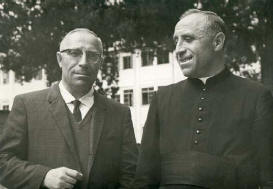 Desde 1947, los Paulinos en Colombia, Ecuador y Centro América (Izquierda P. Francisco Sirito fundador de la Sociedad de San Pablo en Colombia, Derecha P. Fidel Sirito)
Desde 1947, los Paulinos en Colombia, Ecuador y Centro América (Izquierda P. Francisco Sirito fundador de la Sociedad de San Pablo en Colombia, Derecha P. Fidel Sirito)
La Sociedad de San Pablo es una congregación religiosa apostólica, fundada por el Beato Santiago Alberione el 20 de agosto de 1914, para “llevar la Palabra de Dios a los hombres de hoy, con los medios de hoy”. Los Paulinos “quieren vivir de Jesucristo y darlo, como lo interpretó, lo vivió y dio al mundo san Pablo; y todo ello bajo la protección de María, Reina de los Apóstoles y de los apostolados”.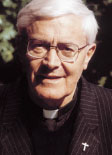
El 26 de abril de 1947, el P. Francisco Sirito (1913-1997) y el Hno. Andrés Degani (1912-1986) llegan a Bogotá, y el 30 de abril fundan la Sociedad de San Pablo en Colombia. El 3 de mayo reciben del Arzobispado la autorización para hacer difusión. Desde sus primeros momentos, no obstante las dificultades, el desarrollo editorial y la difusión han tenido éxito, lo cual ha llevado a la Sociedad de San Pablo a adquirir, poco a poco, una buena estructura organizativa y de gestión.
P,Renato PerinoEl 25 de junio de 1947 se da comienzo, formalmente, a la difusión en Colombia, con la adquisición de la primera librería San Pablo, seguida del inicio de las ediciones y de las publicaciones periódicas: Cooperador Paulino (1951); Familia Cristiana (1952), que logró, especialmente con el P. Renato Perino (1920-1995), un liderazgo de opinión, fue suspendida en 1976; el semanario litúrgico El Domingo (1959), con una edición actual aceptable; Vida Pastoral (1959), suspendida en 1969 y reiniciada en 1984, apreciada en la actualidad por párrocos y agentes de pastoral; Celebremos el Domingo, para los niños (2001); El Pan de la Palabra, misal diario (2000) y Cinco Minutos con Dios (2002) reflexiones sobre los textos bíblicos de la misa. De las ediciones populares de los primeros años, se pasó a un notable incremento de títulos, si bien favorecido las traducciones, que nos han permitido ampliar la oferta editorial.
Con la presencia del P. Marcos Testa (1923-1971), en la casa de Medellín, abierta el 3 de febrero de 1963, se incursiona en el área de catequesis con gran éxito. Posteriormente, gracias a la presentación artística de las ediciones, a cargo del P. Renato Perino, se alcanzó un buen nivel. En 1963, la Sociedad de San Pablo abre, en Medellín, su segunda librería en Colombia y la agencia de San Pablo Films.
En 1977 se lanzó la primera campaña bíblica, con una Biblia hecha en Colombia a un costo de 90 pesos de la época. A partir de 1982, la actividad editorial crece significativamente, gracias a una mayor participación en las ventas hacia el exterior y en las ventas nacionales. Para coordinador todo este trabajo de la División Comercial es fundamental el actual almacén central de Bogotá, abierto en 1994, garantizando así una amplia cobertura en Colombia, Ecuador y Centro América.
Pero ya desde 1960 estábamos abiertos a la colaboración internacional, siguiendo las directrices dadas por el Fundador con la creación del CEPLA (junio de 1960). Años más tarde, con la creación del CIDEP (1991), siguiendo las directrices de la Congregación se procedió al nombramiento del primer Director General del Apostolado de la Provincia, que favoreció el proceso de clarificación y la reestructuración del Apostolado. Actualmente en la Casa Provincial de Bogotá está sede del Administrador Delegado del CIDEP.
En 1988 la Circunscripción sale de las fronteras colombianas y, el 4 de abril, funda la Sociedad de San Pablo en Quito (Ecuador). Esta fundación tuvo dos motivaciones: por una parte, hacer difusión del Fondo Editorial San Pablo y, por otra, dar inicio al apostolado radial, con la participación de un paulino en la radio de la Conferencia Episcopal Ecuatoriana. La estructura ecuatoriana se ha desarrollado progresivamente y, hoy en día, cuenta con siete librerías y una distribuidora central en Quito, así como con la dirección de Radio Católica Manabí, en Portoviejo.
En 1993 se abrió una Librería SAN PABLO en Panamá, administrada inicialmente por laicos. El 27 de junio de 1996, contando con la preceptiva aprobación del Arzobispo de Panamá, se estableció una comunidad paulina en la ciudad, que se responsabilizaría desde entonces de la gestión y control de la librería y de la difusión en el país, y dando así origen a la actual denominación canónica de la Circunscripción: Provincia de la SSP de Colombia-Ecuador Panamá.
Los Paulinos colombianos, presentes directamente en Colombia, Ecuador y Panamá, en los últimos años hemos planificado nuevas iniciativas, especialmente en el campo de la difusión, contando para ello con la colaboración de laicos expertos. De este modo la misión paulina está hoy también presente en Costa Rica (2001), Guatemala (2003), El Salvador (2005), Puerto Rico (2006) y Honduras (2007), con sendas librerías SAN PABLO en cada uno de los países.
Actualmente la Red de Librerías SAN PABLO, dependiente directamente de la Circunscripción, está formada por 35 centros de difusión (18 en Colombia, 7 en Ecuador, 4 en Panamá, 1 en Costa Rica, 1 en Guatemala, 2 en El Salvador, 1 en Puerto Rico, 1 en Honduras).
Desde 1996, la SSP en Panamá
 Casa de la comunidad de los Paulinos de Panamá
Casa de la comunidad de los Paulinos de Panamá
La celebración de los 50 años de la presencia de la Sociedad de San Pablo en Colombia se vio enaltecida por la fundación de una nueva comunidad en la Ciudad de Panamá, perteneciente a la Provincia de Colombia-Ecuador-Panamá. La conmemoración del cincuentenario fue una ocasión propicia para reflexionar sobre el "ser" y "quehacer" de SAN PABLO en la ampliada Provincia y una hermosa oportunidad para trazarse nuevos retos que intentarán responder a las necesidades de la nueva evangelización de nuestros pueblos. Precisamente esta nueva fundación responde al deseo de ampliar el horizonte evangelizador de la Provincia. Por eso se ha puesto la mirada en Panamá, país estratégico del Continente americano.
Desde mayo del 1993 la Sociedad de San Pablo ya estaba presente en esta nación a través de la Librería San Pablo, pero a partir de ahora lo hace sembrando la semilla del carisma, gracias a la generosidad del Hno. Eliécer López y del entonces Diácono Néstor José Carvajal, quienes en representación de la Provincia de Colombia-Ecuador-Panamá asumieron la no fácil tarea de forjar el ideal paulino en tierras panameñas, responsabilizándose d ela apertura de la nueva comunidad y dando un impulso a las actividades apostólicas.
La fundación tuvo lugar el sábado 27 de julio de 1996, día en que conmemoramos los 78 años de la muerte del Venerable Maggiorino Vigolungo, joven aspirante paulino. Algunos días antes el entonces Superior General, P. Silvio Pignotti, había autorizado la apertura de la comunidad en Panamá. De igual manera, el arzobispo metropolitano de esa ciudad, Monseñor Dimas Cedeño Delgado, en carta del 4 de junio de 1996, había ratificado el permiso solicitado por el entonces Superior Provincial, P. Enrique Cortés, para fundar allí una casa.
Actualmente en Panamá se encuentran 4 Paulinos y 14 colaboradores laicos. En un lugar privilegiado de la ciudad es muy conocida y apreciada la librería SAN PABLO, que junto con la distribuidora central y otras tres librerías más modestas en los puntos más estratégicos del país, dan servicio a toda la nación. El P. Gustavo Nova Nova, Vicario Provincial de Colombia-Ecuador Panamá, es actualmente el Superior de la comunidad de Panamá y animador vocacional de los paulinos de Centro América.
Informazioni 57
Informazioni
VENEZUELA 0
Storia
En Venezuela desde 1951
Caracas, 23.07.1957 Venezuela
Don Giacomo Alberione all'aeroporto di Caracas con Don Francesco Sirito (alla sua destra), Fr. Zacconi e Fr. Cirilo Peña in occasione della visita alla Casa Paolina di Caracas.
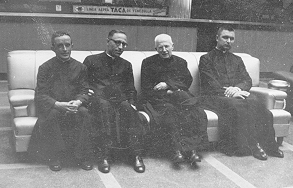 La Sociedad de San Pablo es una congregación religiosa apostólica, fundada por el beato Santiago Alberione el 20 de agosto de 1914, con la finalidad de “llevar la Palabra de Dios a los hombres de hoy, con los medios de hoy”. Nuestra misión tiene su mayor expresión a través de las ediciones de libros, revistas, vídeo, internet, etc., qfotoue anuncian la palabra de Dios a nuestros contemporáneos, hablando cristianamente de todo.
La Sociedad de San Pablo es una congregación religiosa apostólica, fundada por el beato Santiago Alberione el 20 de agosto de 1914, con la finalidad de “llevar la Palabra de Dios a los hombres de hoy, con los medios de hoy”. Nuestra misión tiene su mayor expresión a través de las ediciones de libros, revistas, vídeo, internet, etc., qfotoue anuncian la palabra de Dios a nuestros contemporáneos, hablando cristianamente de todo.
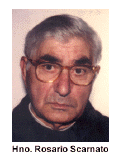
En el encuentro de Ariccia (abril 1960), cuando el Fundador llamó a Roma a los Paulinos de mayor edad, para un especial curso de Ejercicios espirituales, el P. Alberione, propuso la idea de abrir un centro para coordinar las ediciones de Latinoamérica. Se escogió como sede Caracas y se nombró director al P. Benito Spoletini. La primera reunión convocada por el CEPLA, fue constituida por los Superiores mayores de América Latina. Esta reunión se realizó en El Hatillo, del 19 al 21 de mayo de 1962. Entre otras decisiones, se tomó la de traducir de los textos originales una Biblia bajo la dirección del Dr. Evaristo Martín Nieto que saldría a la luz en Madrid con el nombre de “La Santa Biblia”. De esta traducción, los paulinos de Venezuela imprimieron en Madrid una edición especial conmemorativa de los 400 años de la fundación de Caracas (25 de julio de 1967), dicha edición salió al módico precio de 5,00 Bs. ($ 1.00 USD).
Con la entrada en vigencia de la constitución conciliar Sacrosanctum Concilium, de 16 de febrero de 1964, nuestro aporte a la reforma litúrgica consistió en la publicación de varios folletos populares. Se imprimieron grandes tirajes sobre todo del “Misal del Pueblo de Dios” Se inició con él, la exportación al Caribe y Centroamérica y se llegan a imprimir 27 ediciones, alcanzando un millón (1.000.0000) de ejemplares en 10 años. A partir de 1983, debido a la devaluación de la moneda, se inició en Venezuela una gran producción editorial (anteriormente era más barato importar los libros). En 1987, se alcanza un tiraje general de un millón diez mil ciento setenta y cuatro (1.010.174) ejemplares: Ciento dieciocho (118) títulos, cincuenta y tres (53) novedades y sesenta y cinco (65) reimpresiones.
En 1988 se publicó, en el taller de El Hatillo, y por primera vez en Venezuela, la edición de “La Biblia Latinoamérica”, con un tiraje de 50.000 ejemplares. A partir de entonces se ha mantenido, a pesar de la crisis, el mismo ritmo de producción por varios años. Otro aporte a la aplicación de la nueva liturgia, lo constituyo la publicación de la Hoja “El Domingo”, que el mismo P. Alberione nos recomendó en su última visita, en 1963, y que salió con 4.000 ejemplares, pero a los pocos años alcanzó la cifra de 300.000 ejemplares semanales.
El año de la llamada a la casa del Padre del Fundador, en 1971, la editorial SAN PABLO tuvo un nuevo impulso con la publicación audaz de una revista juvenil, titulada “Protesta” en coedición con las Hijas de San Pablo, con la cual llegamos a la masa juvenil a nivel latinoamericano con un promedio de 25.000 ejemplares mensuales. Su publicación duró 10 años para dar paso, en octubre de 1981, a la actual publicación “Familia Cristiana”.
La Distribución de Ediciones Paulinas (hoy SAN PABLO) se incrementó a partir de 1978, gracias a los acuerdos alcanzados entonces a escala nacional con las Hijas de San Pablo. Con la nueva organización de ventas se aumentó la producción. Concretamente en 1989 se difundieron en Venezuela 2.996.567 ejemplares, incluyendo libros importados, especialmente para niños. En esta misma época se inició la producción de audiovisuales.
El 13 de mayo de 1982 se creó la actual Circunscripción de Venezuela, abriendo entonces una segunda casa en “El Paraíso” (Caracas), además de la ya existente el “El Hatillo”. Más tarde, el 29 de septiembre de 2001, tiene lugar la apertura de la tercera comunidad paulina en Venezuela, en la ciudad de Mérida, actualmente en la urbanización La Hacienda, especialmente para trabajar en la animación de la Pastoral Vocacional y en la Formación inicial de los futuros paulinos.
La primera Librería SAN PABLO en tierras venezolanas había sido inaugurada en 1952, en el corazón de Caracas. Décadas más tarde seguirán otras, en ciudades representativas de Venezuela: Maracaibo (1983), San Cristóbal (1991), Mérida (1992), Puerto La Cruz (1992), Maracay (1999), hasta las seis actuales.
En 1990, gracias al apoyo de la SOBICAIN y de la Casa general, se pudo adquirir un amplio local en el edificio Doral Plaza, en “La Candelaria”, donde pronto se estableció la sede local de la SOBICAIN, que en Venezuela opera con el nombre de “Casa Católica de la Biblia”. En el mismo edificio se establecieron desde entonces todas las oficinas de la Editorial SAN PABLO Caracas.
Con ocasión de los quinientos años de la evangelización de América en 1992, se publicó una edición especial, popular, de “La Biblia Latinoamérica”. El 4 de abril de 1992, el Cardenal Lebrún, Arzobispo de Caracas, inauguró, en esta ciudad, una exposición bíblica dirigida y organizada por la SOBICAIN. En el acto también estuvo presente el Gobernador de Caracas, Sr. Antonio Ledesma. También en 1992 se inició la publicación del “Pan Diario de la Palabra” que ha tenido una buena acogida y que actualmente cuenta con un tiraje de más de 50.000 ejemplares mensuales.
En ocasión del gran jubileo 2000, iniciamos la publicación para niños titulada: “Mi Hojita del Domingo” y la más reciente “Oremos con la Iglesia”. Finalmente, debemos señalar que a partir del año 1998 hemos creado la oficina de publicidad y se ha diseñado un sitio o página “Web”.
Informazioni 71
Informazioni
STATI UNITI 0
Storia
75 Years of Pauline in presence in the USA (24 June 2007)
On Sunday, June 24, 2007, the Pauline Family consisting of the Society of St Paul, the Daughters of St. Paul, the Sister Disciples of the Divine Master, the Institute of Jesus the Priest, Cooperators and Friends, gathered at St. Peter’s Church on Staten Island, New York to celebrate and commemorate 75 years of Pauline presence in the United States of America. The Celebrant and Homilist of the Mass was Msgr. James Dorney, Vicar of Staten Island. Celebrating also were the Daughters of St. Paul who arrived in New York in 1932. The Sister Disciples of the Divine Master prepared the altar for the Eucharistic Celebration and among the concelebrants were priests of the Archdiocese, priest members of the Society of St. Paul and a novice of the Institute of Jesus, the Priest. There was a large attendance of the Brothers as well as cooperators and friends. Reception followed in the Church hall of St. Peter's.
Brief story of the SSP in USA
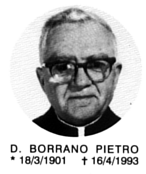 The foundation of the Society of St. Paul in the United States had its very humble beginnings in the Archdiocese of New York. The founder was Fr. Francis Xavier Borrano, who arrived in New York from Italy on October 1931. He had no fixed destination in the city of New York, had no money, and could not speak English. Consequently, as the immigration law required, he was quarantined at Ellis Island.
The foundation of the Society of St. Paul in the United States had its very humble beginnings in the Archdiocese of New York. The founder was Fr. Francis Xavier Borrano, who arrived in New York from Italy on October 1931. He had no fixed destination in the city of New York, had no money, and could not speak English. Consequently, as the immigration law required, he was quarantined at Ellis Island.
Released from Ellis Island, Fr. Borrano was received by the Jesuits at Nativity Church on Second Ave. in Manhattan. During this time he petitioned the establishment of the Pauline Community in New York. After several months temporary permission was granted and Fr. Borrano moved in March of 1932 to an apartment in Brooklyn, New York.
With the arrival of the members, Bro. Raphael, Fr. Stanislaus and Sub-Deacon Mario Gandolfi, the community began to expand and it was necessary to find larger quarters in the Bronx - first in Zerega Avenue, then in Tremont Avenue and then another move to Research Avenue. In 1937 the community made its final move to a six acre plot of land in Staten Island, New York which today is the present residence of the Society of St. Paul. This is the main publishing house for ST PAULS/Alba House books.
On May 9, 1944 the Paulines took possession of property in Canfield, Ohio where the Novitiate was begun. Two new printing presses were bought and the publication of "The Catholic Home Messenger" began. Today, it is the home of Audio Visual tape and CD productions.
In 1954 another foundation was made in the Archdiocese of Detroit. At first the community lived in a small private house and then moved to a larger building in Dearborn, Michigan, where it published a weekly newspaper, distributed films and operated a media center. Currently, the community has a bookstore and visits parishes on weekends for book displays in order to bring the Word of God directly to the people.
The future of our communications apostolate in America lies on the ingenuity and creativeness of the members perpetually assisted by the powerful aid of the Holy Spirit, and under the protection of the Queen of Apostles and of St. Paul.

Seated from left: Francesco Saverio Borrano, Giovanni Costa, don Giacomo Alberione, don Timoteo Giaccardo, don Giuseppe Trosso
Informazioni 33
Informazioni
PERÙ-BOLIVIA 0
Storia
La Sociedad de San Pablo en Perú tiene una trayectoria de 27 años. Ha sido el fruto de la iniciativa de la Provincia “Argentina - Chile” y ha sido parte de ella desde sus orígenes. A todos los paulinos que han formado parte de esta historia queremos honrarlos y agradecerles con el compromiso de hacer fructificar el esfuerzo, el cansancio, las energías y el entusiasmo que han permitido forjar este camino. Hoy el Perú cuenta con una comunidad en la ciudad de Lima, 6 centros de difusión y una Sede Central de apostolado.
La presencia de los paulinos en Bolivia es más reciente, desde el año 2011, gracias al empeño de la Región de Venezuela que puso las bases para un promisorio desarrollo en estas tierras. Ahora nos comprometemos a que la semilla siga creciendo y agradecemos todo el bien realizado por nuestros hermanos venezolanos. La comunidad paulina y el centro de difusión se encuentran en la ciudad de Santa Cruz de la Sierra.
Esta nueva Región nace, como le gustaba decir al P. Alberione, “desde Belén”: pequeña, pero con el entusiasmo de crecer “en sabiduría, estatura y en gracia delante de Dios y de los hombres” (Lc 2, 52). Y nace universal en sus miembros, como el corazón de Pablo, con el desafío de inculturar profundamente la Palabra de Dios en estos vastos países andinos.
El Superior General don Valdir José De Castro ha creado la nueva region Perú-Bolivia en el 8 de abril de 2016, e ha designado como primero Superior Regional de esta circunscripción el Pe. Alberto Scalenghe, por el periodo 2016-2019.
Informazioni 31
Informazioni
ASIA 0
FILIPPINE-MACAU 0
Storia
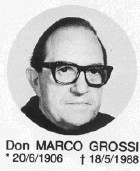 1935 - Pauline Mission reaches the Pearl of the Orient Seas
1935 - Pauline Mission reaches the Pearl of the Orient Seas
"In the prayers of all, we warmly recommend the houses in formation: in a particular way our dearest Fr. Bernardo Borgogno and Fr. Marco Grossi who are journeying to the Philippines"
(Blessed James Alberione, SAN PAOLO (1926-69) 1935)
The Society of St. Paul started its mission in the Philippines with the arrival of two Italian Pauline priests, Fr. Gaetano Marco Grossi and Fr. Matteo Bernardo Borgogno on July 7, 1935. Immediately the Paulines operated a printing press in Lipa City, Batangas. On August 10, 1941, the Archdiocese of Manila welcomed the Pauline priests and brothers on condition that they administer one parish within the Archdiocese. Thus, the Our Lady of Sorrows Parish was set up in a lot along F. B. Harrison in Pasay city, and in the same compound was relocated the Pauline “mission”. But soon World War II broke out and everything was back to zero.
After rebuilding the parish church, the seminary and the printing facilities, the Paulines launched a more active apostolic presence through the publication of two monthly magazines: “Homelife,” a family magazine (1954), and “The Youngster,” a magazine for the youth (1956). On June 30, 1960, while maintaining the parish in Pasay, the growing SSP community moved to a new place at 7708 St Paul Road, San Antonio Village, Makati. This became the central hub of the apostolate and formation for many years.
Moving into the 70s, the Pauline apostolate went through a rapid expansion in terms of having more printing machines and personnel. “Homelife” and “The Youngster” became the banners of the apostolic thrust. St. Paul Publications started its operations. Libreria San Pablo – with its initial branches in Pasay and Ermita became the venues for diffusing Pauline products. St Pauls Marketing was organized to consolidate the efforts of the Pauline priest and brothers in diffusing the magazines and other Pauline products in schools and parishes.
The early 80s saw more expansion with the acquisition of bigger printing machines. In 1983 the novitiate house was founded in San Fernando, Pampanga. In March 7, 1987 upon the invitation of the Bishop of Macau, and with the recommendation from the General Government to start an apostolate of presence in China, the Macau community was added to the Philippine circumscription. In 1990, the Philippine Regional-Delegation was turned into a Province, thus born the Society of St. Paul Philippine-Macau Province.
Passing through the 90s, the Society of St. Paul underwent an important change of image – from Printer to Publisher. In 1991 the General Government of the Society of St. Paul launched the use of an official trademark: ST PAULS. It is the “corporate logo” to be used in all its circumscriptions all over the world. Along this line, St. Paul Publications was empowered to engage in the copyrighting, producing and marketing of local titles and reprints. In 1991, the Society of St. Paul Philippine-Macau Province sold a part of the lot in Makati.
The proceeds financed the establishment of Pauline communities and diffusion centers in various parts of the country, namely: Cebu City on 29 May 1991); Silang, Cavite on 20 June 1993 (formation house for aspirants); and Cagayan de Oro on 15 September 1995. Soon after; those in Iloilo City (on August 20, 2000) and Davao City (on June 12, 2002) were put up.
The beginning of the 21st century ushered fast changes in the media culture with the advent of computers, cable TVs and cellular phones. The demand for print media has lessened drastically as the electronic media and information technology took the lead. To meet these developments, ST PAULS Philippines was organized as one apostolic entity and was tasked to consolidate all the moments of the operations, from the editorial, to production, to marketing, and to distribution/diffusion. ST PAULS Bookstores are present in the major cities of the Philippines, and are very much visible at the SM Malls and other Malls.
Vision
Being the apostolic ministry of the Society of St. Paul Philippine-Macau Province, ST PAULS Philippines aims at becoming an efficacious evangelizer in the culture of communication.
Mission
In its ministry of integral evangelization, ST PAULS Philippines shall continue to publish and diffuse materials for the education and promotion of the Catholic faith. And, responding to the call of Jesus, the Divine Master to “put out into the deep” (Lk. 5:4), ST PAULS Philippines shall evolve into a single multimedia publisher of the Word of God by venturing into the fields of digital and information technology.
Informazioni 102
Informazioni
INDIA-NIGERIA-GRAN BRETAGNA-IRLANDA 0
Storia
Brief History of Society of St Paul
The first two Paulines, Fr Domenico Ambrosio and Fr Guido Paganini arrived in Bombay by the Italian liner Victoria on April 10, 1935. But they could not stay long in Bombay as the Archdiocese was not open to religious other than the Jesuits.

After several attempts to get admitted into a diocese, they were allowed to stay in Delhi till they are admitted into another diocese. Here they maintained themselves by their hard work with a treadle machine. In December 1936 Fr Paganini left for Japan. He was replaced with Fr Vico Anselm who after a few months became sick and returned to Italy.
On August 2, 1937, Fr Alfonso Ferrero arrived in Bombay and rushed to Delhi to meet Fr Ambrosio before he left for South America. He found a new house in Court Road in the Civil Lines. There was a garage which soon became our mini-press with a treadle machine and a few sets of types. In October, 1937, two more paulines arrived – Fr Gabriel Colasanto and Br Bernardino Ruffoli.
In March 1938, Fr Alfonso Ferrero visited several Bishops with the hope of finding a place to settle down. Finally, Mons. Angelo Poli, the Bishop of Allahabad, was willing to accept us on the recommendation of Mons. De Vito, the then Rector of St Joseph’s Seminary, Allahabad. Bishop Poli offered us the Mission at Fidelispur, now known as Ranipur. However, Fr Ferrero was not impressed with the offer. On 13th October in 1938, Archbishop Mullighan officially admitted them into the diocese of Delhi.
Soon a difficulty arose: Italy sided with Germany in the second world war and the British authorities in Delhi began to grow suspicious of Italian Missionaries. Finally, they accepted the offer of Bishop Poli and moved to Allahabad on 21st June, 1939, and settled down at Fidelispur. Soon they recruited the first batch of aspirants from India.
In October 1939 Germany declared war on England and later Italy joined Germany. On 14th June 1940, Fr Alfonso Ferrero, being an Italian citizen, was arrested and brought to Agra, and later to Ahamednagar. Br Bernardino lost contact with the aspirants who were in holidays. He could not remain alone at Fidelispur. He became secretary to the Bishop and stayed at the Bishop’s house. Soon, the Bishop too was arrested along with Br Bernardino.
As the war got over in 1945, Bishop Poli and Br Bernardino were freed. Fr Ferrero was retained in the camp along with fifty other Missionaries for another year.
When they returned after the war, there was nothing left at Fidelispur. The house was occupied by refugees from Burma. All our belongings, including the mini-press, had disappeared.
In the winter of 1948-49 Fr Colasanto returned after his treatment. In the beginning of 1948 Br Pio Rizzo came, followed by Fr Bellanzon. They recruited a few aspirants, and thus once again we revived the regular Pauline life. In 1949 our founder, Blessed Giacomo Alberione (Primo Maestro) made his first visit to India. On 19 April, 1950 another member was added, Fr Ettore Diamantini.
In 1948 Mons. Valerian Gracias was elected Archbishop of Bombay and he invited Paulines to Bombay, requesting them to take over the Examiner Press Bookshop.
On 11th November, 1951, two more members arrived – Frs Maurus Ferrero to Bombay and Antonio Rossi to Allahabad. Fr Attilio Tempra came in February 1952 and was stationed in Bombay.
In 1953 Fr Diamantini came to Bombay to look after the formation of the aspirants. Around Christmas Br Pio also came to Bombay to manage the Bookshop which he did till he left for Ireland in 1981.
In 1955 Primo Maestro came on a second visit to India and his last visit was in 1963.
On 20 October, 1959, the first Indian Pauline Brothers (Timothy Tirkey, Angelo Pullokaran and Thomas Cornelio) made their perpetual profession and on 01 July, 1962 the first Indian Pauline priests (Albert Rego and Paul Vechoor) were ordained.
On 30 June, 1965, Society of St Paul, India, became a Province and Fr Alfonso Ferrero was appointed the first Provincial.
Eventually, Society of St Paul was spread to different parts of the country:
- New Delhi: In 1964 Fr Tempra and Br Angelo Pullokaran went to New Delhi.
- Bangalore (Karnataka): In 1968, Fr Gabriel Colasanto and Br Basil Chennamkulath were sent to pioneer the community of Bangalore.
- Madras (Tamil Nadu): In 1972 Fr Paul Maruthanakuzhy and Br Carmel Kizhakel sowed the seed of the community of Madras.
- Ernakulam (Kerala): In 1976 Br Carmel Kizhakel and Fr Abraham Nedumpuram pioneered the community of Ernakulam.
- Coimbatore (Tamil Nadu): The community of Coimbatore was inaugurated on 20th August 1982, with Fr Paul Maruthanakuzhy and Br Pancratius Tirkey as pioneers. This community was closed down in 1992.
- Calicut (Kerala): On 30 September, 1984, Fr Augustine and Br Leo Kocheelath were sent to open the community.
- Eluru (Andhra Pradesh): In December 1984, Fr Jose Pottayil pioneered the community of Eluru, which was later closed down on 9 June, 2001.
- Pune (Maharastra): On 26 November, 1988, Fr Vincent Gnarakatt, Fr Vincent Carmelbhavan pioneered the community of Pune.
- Jorhat (Assam): On 5 September, 1991 Br Jesudass and Fr Joe Narivelil were sent to Jorhat.
- Ibadan (Nigeria): On 6 October, 1991, Fr Renato Perino sent Br Basil Chennamkulam and Fr Leo Botavara III to Ibadan to initiate a new opening in Nigeria. The community was formally opened on 26 November, 1991. By a Decree dated 21 December 1995, Superior General Fr Silvio Pignotti instructed that Nigeria be part of the Indian Province with effect from 1 July 1996. An extension to this community was inaugurated at Enugu, on 3 November, 2007.
- Vijayawada (Andhra Pradesh): On 1 July, 1992, Fr Emmanuel became the pioneer of Vijayawada.
- Ranchi (Jharkhand): On 26 September, 2004, the house or Ranchi was blessed. Br Leo and Br Dungdung were the pioneers.
- Guwahati (Assam): On 22 October, 2006, the community of Guwahati was erected. Fr Vincent Carmelbhavan pioneered the project.
- Jalandhar (Punjab): The community was formally erected by the decree of 25 January, 2008.
Today the Indian Province of the Society of St Paul consists of 153 members in 14 communities and overseas. We spread the message of Christ to the 103 crores of God’s people spread in 33 states of the Indian subcontinent and 12 crores of Nigeria through:
16 Book-Centres
3 Mobile Book-Centres
5 Whole-Sale Distribution Centres
Book-fairs and Book Exhibitions
An Outstanding Publishing House
8 Regional Language Publications
2 Modern Presses
5 Periodicals
Mini-Media Products
Audio-Visual Products
2 Parishes
Members of Society of St Paul, India, also serve overseas in 7 countries (Australia, Canada, England, Ireland, Italy, Nigeria and USA).
"The history of the Society of St Paul in India is a history of hardships and difficulties. But it is also a history of innumerable blessings of God, who in spite of our many errors and evident limitations has been very generous and merciful towards us. To Him be our thanks, in all humility. In him we trust for the future” (Fr Alfonso Ferrero)."
Informazioni 50
Informazioni
OCEANIA 0
AUSTRALIA 1
Storia
 The 1950s
The 1950s
The story of the Society of St Paul’s foundation in Australia began in August 1952 when Fr Francis Borrano arrived in Sydney. Then a member of the United States Province, Fr Borrano had been sent by the founder of the Society of St Paul, Fr James Alberione, to investigate the possibility of beginning a foundation in Australia.
Fr Borrano belonged to the first group of young men to pronounce their religious vows in the Society of St Paul, together with Fr Alberione, on 5 October, 1921. The Australian foundation can thus be traced to one of the original members of the congregation, one who was there when the congregation had its humble beginnings in Alba, in the Cuneo region of northern Italy.
Fr Borrano remained in Australia for about ten months, initially as a guest of the Redemptorists before moving to the presbytery at St Joseph’s, Newtown, where he assisted in the ministry of the parish. He was not there long when he met a young man named Michael Byrnes who was an apprentice compositor/linotypist at The Catholic Weekly, the newspaper of the Sydney Archdiocese. He expressed an interest in studying for the diocesan priesthood but Fr Borrano pointed out that since he was already involved in the religious press and wanted to be a priest he could combine both by becoming a member of the Society of St Paul.
At the end of his stay, Fr Borrano provided the founder, Fr Alberione, with a positive report on the potential for a Pauline mission in Australia and passed on a warm invitation from the Archbishop of Sydney, Cardinal Norman Thomas Gilroy, to establish a house in the Sydney Archdiocese. The decision to proceed was taken and Fr Bernard Gnata was chosen to begin the Pauline foundation in Australia. Also a member of the United States Province, he arrived in Australia on 16 June, 1953. Shortly after the Redemptorist congregation put at Fr Gnata’s disposal a small residence in Concord. It was to be the first centre of the Paulines in Australia. It had a small chapel in which Mass was celebrated and the Blessed Sacrament reserved. It was in that Chapel on about 20 August 1953 that the official commencement of the Australian foundation was marked with prayer and thanksgiving. A new Pauline mission had begun. The initial community comprised Fr Gnata and the aspirant, Michael Byrnes.
With the help of some lay cooperators sympathetic to the ideals of the Society of St Paul an apostolic activity began. Religious books and pamphlets published in the United States were imported and distributed in Australia. One of the earliest outlets for these publications was the small bookshop attached to St Mary’s Cathedral.
On 25 January 1954 the infant community moved to a larger house in Abbotsford Rd, Homebush. About this time, the office for the promotion and distribution of booklets and pamphlets was transferred Cusa House, a building owned by the Archdiocese in Elizabeth Street, Sydney. In time some 16,000 ACTS and Liguori pamphlets would be distributed every month from this office.
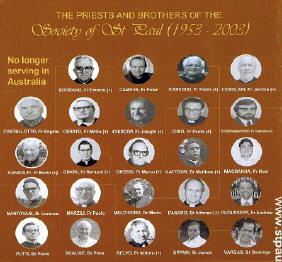 "Note well that without sacrifice you cannot achieve anything. The cross cannot be placed only on the church steeple. It must also be planted in our hearts. All that is good costs. Don’t do only those things that are eye-catching, but focus on the little things, and keep going ahead day by day."
"Note well that without sacrifice you cannot achieve anything. The cross cannot be placed only on the church steeple. It must also be planted in our hearts. All that is good costs. Don’t do only those things that are eye-catching, but focus on the little things, and keep going ahead day by day."
(Beato Giacomo Alberione)
Other Paulines arrived in due course. Br Luciano Melchioro arrived from Italy in March 1954 followed in August by Fr Mirko Cerato. This made possible an expansion in the promotion of religious literature and the commencement of a film distribution apostolate among the Italian community in Sydney. Shortly afterwards, Michael Byrnes, having made his religious vestition on 15 August, left for Rome to continue his formation.
An event of great significance occurred on 14 May, 1955, when the founder of the Pauline Family, Fr James Alberione, arrived in Sydney for a three day visit. He was accompanied by Sr Thecla Merlo, the Superior General of the Daughters of St Paul and Sisters Laurentia Casamassima and Redenta Commentucci, who would remain to form the first community of the Daughters of St Paul in Australia. At the end of the visit he said to the Paulines: ‘Note well that without sacrifice you cannot achieve anything. The cross cannot be placed only on the church steeple. It must also be planted in our hearts. All that is good costs. Don’t do only those things that are eye-catching, but focus on the little things, and keep going ahead day by day.’
Shortly after this visit the Sisters of Jesus Good Shepherd (Pastorelle) came to Australia where they opened a house in Melbourne after a brief stay in Sydney. In 1957 the Sister Disciples of the Divine Master arrived in Sydney. Fr Alberione’s remarkable Pauline Family was now well and truly established in Terra Australis.
1957 saw the arrival of Fr Jerome Casolari and Br Alphonsus Panaro from the Philippines. Br Alphonsus was one of the many missionaries expelled from China in the 1950s. During this period a small printery was set up in a service station in Burlington Rd in Homebush. Since the community was living in a residential area it was impossible to have a printery on the premises.
The return of Fr Casolari to the Philippines saw the arrival of Fr Marco Grossi from the same country. In 1959 he came to know that the Dominican Sisters who conducted St Lucy’s School for the Blind in Broughton Rd, Homebush, wished to move to Wahroonga and that the property was for sale. In December of that year the Society purchased the property and shortly afterwards took up residence. It continues to this day to be the principal residence (or ‘motherhouse’) of the Society of St Paul in Australia.
The 1960s
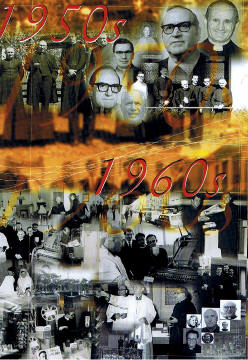 Fr Grossi moved heaven and earth to get permission from Strathfield Council to allow the use of printing machinery on the newly acquired Broughton Rd property. Finally, Council allowed this under strict conditions. The few small printing machines were moved from the service station to the new property and a stable form of apostolate was established.
Fr Grossi moved heaven and earth to get permission from Strathfield Council to allow the use of printing machinery on the newly acquired Broughton Rd property. Finally, Council allowed this under strict conditions. The few small printing machines were moved from the service station to the new property and a stable form of apostolate was established.
Meanwhile, in Rome, the Founder was following events closely. He had sent two superiors from the Philippines and now, spinning the globe of the world that was always on his desk just a little, he decided to send superiors from Japan. The first of these, Fr Angelo Castellotto, arrived in 1961 while the second, Fr Paul Cirio, arrived in 1964.
In March of 1963 the Founder made his second, and final, visit to his sons and daughters in Australia. He was well satisfied with all that had happened in the eight years since his previous visit, and exhorted the Paulines to intensify their efforts in bringing the Gospel to everyone, especially those most far from the light of Christ.
The members were to take up this challenge by printing attractive and inexpensive editions of the New Testament and the Gospels. The Second Vatican Council, held from 1962-65, was immensely significant for the universal Church and for the publishing apostolate of the Society of St Paul. The various constitutions, decrees and declarations of the Council were printed, published and distributed by the Homebush community. Of particular significance were the changes in the liturgy that were introduced gradually in the years following the Council, including the introduction of the use of vernacular language in the liturgy. Throughout the late 1960s and early 70s Paulines published hundreds of thousands of copies, in various editions, of My Mass Companion, a pamphlet containing the ordinary parts of the Mass with the peoples responses.
This expansion in printing and publishing activities was made possible by the arrival of more Paulines from overseas. Following his ordination in Rome in 1961, Fr Michael Byrnes returned to Australia in 1962. Shortly afterwards Br Paolo Putti arrived from Italy, Br Fidelis Kottoor from India and Fr Isidore Selvo from the Philippines.
With the arrival of Br Lorenzo Mantovani in 1968, Fr Paul Marzilli in 1969 and Br John Ferrari in 1970 a greater degree of stability and organization became possible. The two Brothers were able to strengthen the printing plant with their expertise while Fr Paul Marzilli became Master of Novices for a number of young men who had entered the congregation. A number of these served for some years, making a generous contribution to the community, before deciding to leave. Two Australians who entered the congregation in the late 1960s completed their formation and continue to serve the congregation in Australia today in various capacities – Br Noel Bagnall and Fr Michael Goonan.
During the 1960s the small book distribution centre that had begun in Cusa House in 1953 moved to larger premises in the Queen Victoria Building in George St, Sydney. Stocking a greater range of titles this became the first St Paul Book Centre, under the management of Fr Selvo. In 1970 the Centre was relocated to the Haymarket end of George St and the following year its management was transferred to the Daughters of St Paul. The Daughters continue to operate the Centre to this day. Now called Pauline Books and Media, it operates in spacious premises in Castlereagh St, Sydney.
The 1960s also saw the expansion of the Society of St Paul to Melbourne. In 1962 Fr Bernard Gnata went to Melbourne to see what possibilities were there. He rented a house in Drummond Street, Carlton, where he commenced an apostolate of importing and distributing Famiglia Cristiana, a very successful family magazine published by the Society of St Paul in Italy. The ready availability of this magazine in Australia was much appreciated by many of the Italians who had migrated here in the 1950s and 60s. In 1969 Fr Joseph Chircop from Malta joined Fr Bernard in Melbourne. Previously Fr Joseph had served as a missionary in India. Satisfied that the Melbourne mission was in good hands Fr Bernard, who had opened the first house in Sydney in 1953, returned to his na
tive Italy in 1971 where he died a year later.
The 1970s
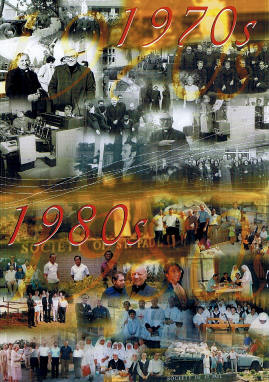 The 1970s were years of significant development for the apostolic activities of the Society of St Paul.
The 1970s were years of significant development for the apostolic activities of the Society of St Paul.
Many new titles were published by the Sydney community. Notable Australian writers like Kevin O’Shea CSsR and Paul Duffy SJ had works published by St Pauls. Australian editions of major international works such a Bernard Haring’s three volume work on moral theology, Free and Faithful in Christ were also published. (In the years since many notable Australian writers, theologians and biblical scholars have had works published by St Pauls Publications.)
With the publishing expanding, the original printing equipment was replaced by the latest machines and a larger printing building was constructed, along with a new residence to replace two older houses on the property. In 1978 Fr Paul Careddu joined the Sydney community and in the same year Br James Uppani, an experienced offset printer, came from India to assist with the developing printery.
Development was also taking place in Melbourne. In 1970 the Society purchased a 15 acre property in the outer Melbourne suburb of Scoresby (later called Wantirna Sth), where work commenced on a house of formation. Tragically, in January 1972, while the house was being constructed, Br Alphonus Panaro was killed in a tractor accident. This hardworking brother, who as a young man had survived a massive fall from the choir loft of the Society of St Pauls’s Church in Alba, Italy, and who had survived the oppression of the Communists in China in the 1950s, was the first Pauline to die on Australian soil. He is buried in the Carlton General Cemetery in Melbourne.
Shortly afterwards, Br Jospeh Barbieri arrived in Melbourne to form the initial Scoresby community with Fr Joseph Chircop and two students, Michael Goonan and Leo Orland. Though the focus of the house was formation, a small printery was set up in a shed on the property and some commercial printing was undertaken to help pay the bills, a course of action adopted by most Pauline communities, including the Homebush community, in their early years. In 1974 the community began publishing Our Sunday Celebration, a bulletin for parishes containing information about the liturgy of the Sunday. Beginning with subscriptions from just a handful of parishes the bulletin’s circulation grew steadily. Later a second bulletin, focusing of the Liturgy of the Word, called The Saving Word, was commenced. These two bulletins continue to this day with approximately 100,000 copies being circulated to about 350 parishes around Australia each week.
In 1977 a small audio-visual apostolate was established in Scoresby producing talks and music on cassette. It continued for some years before a scarcity of personnel necessitated its closure.
The period from the mid seventies to the late eighties saw an ongoing consolidation of the congregation and its activities in Australia, The greater facility of travel opened possibilities for the interchange of members. Gradually, the first members to come to Australia who were mostly Italian were replaced by other members coming from Asia, most notably from India and the Philippines. Fr Andrew Pudussery arrived from India in 1982. Nestor Candado was the first Filipino-born member to be assigned to Australia. He was still a student for the priesthood when he arrived in December 1981 and was ordained in St Jude’s Church in Scoresby in December 1983. Br Domingo Vargas arrived in Australia from the Philippines in 1984 to be followed in 1989 by two more students from the Philippines, Norman Pena and Noel Magbanua. One year previously Br Stephen Scalise from the United States joined the Strathfield community.
In 1980 Fr Mario Gandolfi came to Australia for one year as the Delegate of the Superior General with authority to coordinate the activities of the houses of Sydney and Melbourne. Until then both houses were directly dependent on the General Government in Rome with only a loose internal relation. A year later Fr Peter Campus arrived in Australia to take on the role of Delegate of the Superior General. A native of Sardinia in Italy, Fr Campus had served in the Philippines for many years.
On his arrival, Fr Campus was amazed to find that the Wantirna Sth printery was housed in what was little more than a shed. With the Sunday bulletins prospering, the tiny printery had become cramped and uncomfortable. He authorized the construction of an apostolic building on the Scoresby property that would house a printing plant and administration offices. This building was blessed by the Superior General, Fr Renato Perino, in December 1983, on the day of the First Mass of Fr Nestor.
Shortly afterwards Fr Campus was assigned back to Italy where he was involved in the management of the Pauline periodicals in Milan. Later he would be appointed to the General Government of the Society of St Paul and in April 1998 he was elected the sixth Superior General of the congregation, an office he currently holds.
Fr Campus was replaced by Fr Gabrielle Di Giovannantonio who unfortunately was found to be terminally ill with cancer shortly after his arrival in Australia. In December 1985 Fr Michael Goonan was appointed Delegate of the Superior General for Australia and in 1988 the two houses in Australia were formed into self-governing Region of the congregation with Fr Michael appointed the first Regional Superior.
The growing unification of the two houses led to a better co-ordination of apostolic activities. By the mid-1980s the Society of St Paul was operating two large printeries in Australia. A decision was taken to close the printery in Homebush and consolidate all printing activities in the new printery in Wantirna Sth, Melbourne. Homebush would continue to operate as a publishing house but all printing would be done in Melbourne. New machines were purchased for the Melbourne printery. The first book to roll off the new press was The Pope in Australia, a collection of the talks and homilies given by the Pope during his historic visit to Australia in 1986. Fifteen thousand copies of the book were sold within three months of the Pope’s visit. In 1989 Fr Bruno Colombari arrived in Melbourne from Italy. His first task was to oversee the creative design and layout of the publications.
The 1990s to the present
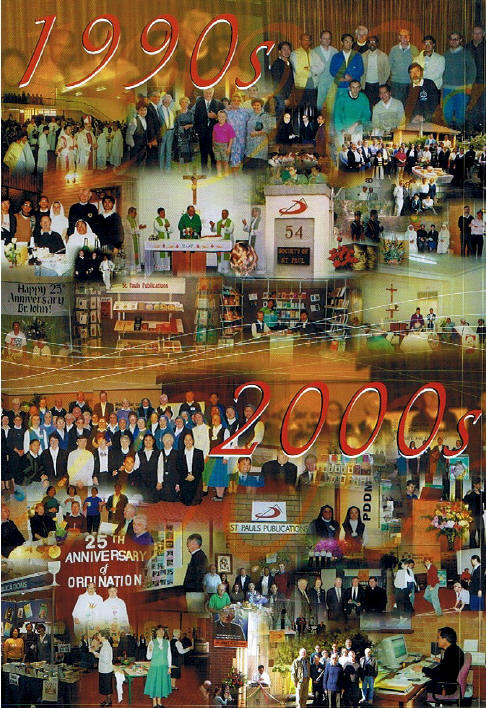 In 1991 Fr Andrew Pudussery was appointed Regional Superior of the Australian Region, to be followed in 1997 by Fr Nestor Candado. More recently Fr Michael Goonan has resumed the role.
In 1991 Fr Andrew Pudussery was appointed Regional Superior of the Australian Region, to be followed in 1997 by Fr Nestor Candado. More recently Fr Michael Goonan has resumed the role.
In 1993 the Society closed its printing plant at its Melbourne house. In the space of six years the Paulines went from operating two large printeries in Australia to operating none. In this it was replicating a trend that was occurring in Pauline Houses throughout the world. With fewer vocations and members ageing there were no longer sufficient able-bodied members in the congregation to undertake the heavy work of the printing plant. As well printing equipment had become very high-tech and expensive, and it was more cost effective to outsource the printing of books. Most significantly, however, it was recognized that members of the congregation should direct their energies into the creative, phases of the apostolate (editorial, design) and into the promotion and diffusion of religious materials. The actual printing of books and bulletins could be entrusted safely to commercial companies.
Following the closure of the Melbourne printery the large property at Wantirna Sth was sold and the Melbourne community transferred to a house that had been purchased much closer to the city in the suburb of Kew. The community was entrusted with the task of vocations’ promotion and the promotion of the congregation’s publications.
The closure of the printery and house at Wantirna Sth had created the space for a new apostolic initiative to emerge and that duly happened in December, 1995, when the Archbishop of Brisbane invited the Society of St Paul to take over the operation of the Archdiocese’s book centre located near the Cathedral. In early 1995 Fr Bruno Colombari and Deacon Norman Pena moved to Brisbane and in May of that year, St Paul’s Book Centre was blessed and officially opened by Archbishop John Bathersby. Fathers Bruno and Norman, the founding members of the Brisbane community, were to remain together in Brisbane building up the book centre until early 1999 when Fr Norman left for Rome to undertake further studies. He was replaced by Fr Ruben Nadalich who had recently arrived from Argentina. In 1999 the Society purchased an apartment for the community in the Brisbane CBD, within walking distance of the book centre.
The Brisbane book centere has proved a very positive activity for the congregation and a service much appreciated by the people of Queensland. It was through St Pauls Book Centre that a young Brisbane man, Christopher Brennan, came to know of the Society of St Paul. Chris entered the congregation in 1998 and is continuing his formation in Sydney where he assists also in the editorial department.
In time it became apparent that the successful establishment of a new house and book centre in Brisbane called for a reassessment of the congregation’s resources and possibilities in Australia. It was decided to close the house in Melbourne to enable a concentration of apostolic energies in the Sydney publishing house and the Brisbane book centre. The house of Kew was sold in late 2002. The Society’s presence is not, however, completely gone from Melbourne as Br Jospeh Barbieri, a member of the Melbourne community since 1972, continues to live there and other members of the Society of St Paul visit regularly for reasons of apostolate and for functions associated with the Pauline family.
Throughout the 1990s and to the present day, the publishing activities of the Sydney community continued, with many books by Australian authors being published along with a number of international co-publications. A major project was the publication of the Australian edition of The Catechism of the Catholic Church in 1995. The publication of Sunday bulletins and Church documents continue to be important activities, overseen currently by the bulletins and documents editor, Fr Michael Byrnes. Recently the Catholic Bishops have asked St Pauls to be involved in liturgical publishing. The Rite of Christian Initiation of Adults and Pastoral Care of the Sick will be the first two liturgical texts to be published on behalf of the Bishops’ Conference by St Pauls.
For the Society of St Paul, as for all religious congregations, the administration of apostolic activities became much more complex in the nineties as a result of changes in government legislation and the greater involvement of lay people in apostolic activities. Br Noel Bagnall has played a major role in restructuring the apostolic administration, a task continued today by Fr Nestor Candado. Since his return from Rome, Fr Norman Pena has fulfilled an important role in leading the congregation through the intricacies of the information technology revolution.
In recent years the Australian Region has assisted Paulines from Korea and Japan to learn English. It has been commonplace for the Strathfield community to have one and sometimes two members from these countries with us for a year or two to learn English and experience a different cultural setting. Their presence provides vitality and new vision to the community. Presently the community is hosting Cleric Silvano Han from Korea.
The last decade has seen a much greater involvement of other religious and lay people in our apostolic activities, which is now greatly dependent on their collaboration for its continued development. The story of the last ten years of the Society of St Paul in Australia would be incomplete if we failed to acknowledge the generous contribution these collaborators make to our life and mission. We also acknowledge the great help given to us in our early days by a number of Italian families, themselves immigrants trying to establish a new life in this country but always willing to help the ‘Paolini’ in any way they could. We are also in the debt of many religious congregations, bishops, clergy and lay people who have helped us in various ways over the past fifty years. Their names are too many to record and sadly, some have surely been forgotten. But their names are writ in heaven. They are all a part of our story and we remember them with gratitude.
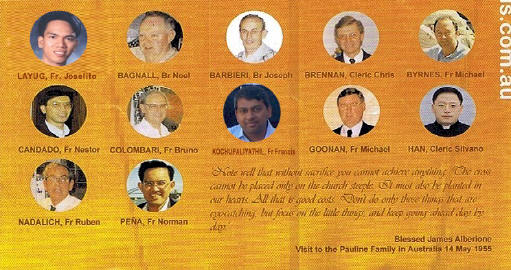
On 27 April 2003, Fr James Alberione, the founder of the Society of St Paul and of the Pauline Family, was beatified by Pope John Paul II. Many people chose the occasion to express their congratulations to us and their appreciation of the contribution we make to the life of the Australian Church. The Society of St Paul has remained a small congregation in Australia thoughout its fifty years in this country but by the grace of God and with the help of many people we have made a contribution to the life of the local Church and we hope we can continue to do so for many years to come. For as long as we can, we will continue to be faithful to the task entrusted to us by our founder, Blessed James Alberione, ‘to live and give to the world Jesus Christ, the Way, the Truth and Life’.
Informazioni 16
Informazioni
EUROPA 0
SPAGNA 0
Storia
Principales hitos históricos
La Sociedad de San Pablo es una congregación religiosa apostólica, fundada por el padre Santiago Alberione en Alba (Cuneo, Italia), el 20 de agosto de 1914, para predicar el evangelio valiéndose en particular de las nuevas tecnologías en la nueva cultura de la comunicación. Apenas transcurridos 20 años, el Fundador envía en 1934 a uno de sus primeros seguidores, el padre Desiderio Costa (1901-1989), a comenzar su obra en tierras españolas, y él será el primer Superior Provincial, desde la erección de las Provincias y Regiones, en 1956, hasta 1971.
La Sociedad de San Pablo operó durante muchos años fundamentalmente en Zalla-Bilbao y en Coslada-Madrid, con gran autonomía e independencia entre ambas comunidades, tanto en el campo apostólico como en las actividades formativas de los profesos y aspirantes paulinos, siguiendo el llamado “modelo albés”. La casa de León, abierta en 1951, atravesó momentos difíciles y por circunstancias diversas tuvo que cerrarse en 1953.
En diciembre de 1951 comienza en Zalla (Vizcaya) la publicación de la revista “Familia Cristiana” y por esas fechas se ponen en marcha en Madrid otras publicaciones periódicas que no lograron sobrevivir: “El Ángel del Hogar” (hoja dominical), “Valentín” (revista infantil) y “Vida Pastoral”. Hacia 1952 comienza sus actividades “San Pablo Films”, que llegó a adquirir notable desarrollo, con Agencias en Madrid, Bilbao, Barcelona, Valencia, Sevilla y Valladolid, regidas por paulinos y paulinas. En torno a 1960 surge la comunidad de Protasio Gómez, que no tarda en convertirse en sede del Gobierno Provincial.
A mediados de la década de los setenta, coincidiendo con los notables cambios sociopolíticos y religiosos, que supusieron una gran pérdida de miembros, se empie¬zan a tomar las primeras medidas importantes para la unificación de la vida paulina y apostólica de la SSP Provincia de España, con la centralización adminis-trativa, la distinción entre comunidades y actividades apostólicas y la supresión de las imprentas propias.
Efectivamente, la crisis posconciliar, las sucesivas reformas educativas del país y las nuevas tecnologías que van surgiendo, sobre todo en el campo de las artes gráficas, son algunas de las principales razones que aconsejan el cierre de los dos “colegios apostólicos” de Zalla y Coslada y de las imprentas anexas a los mismos. Al mismo tiempo, y de una manera escalonada, se produce la apertura de cinco comunidades: Sevilla (1970), Oviedo (1972-1999), Valencia (1975-1988), Las Rozas (1976-2012) y Barcelona (1980-2003), a lo que hay que añadir la ampliación, en diciembre de 1978, de las instalaciones de Protasio Gómez, sede actual de las actividades apostólicas propias de la Dirección General, de la División Editorial y de la Administración centralizada de la Provincia.
Durante la década de los ochenta tiene lugar un fuerte período de expansión y consolidación de la actividad editorial, ya un poco más organizada y profesio-nalizada, con tres sectores apostólicos de creación y producción editorial (libros, música, vídeos), ofertando temas, colecciones y proyectos editoriales que son apreciados y difundidos a una y otra parte del Atlántico. En 1988 se inaugura la Casa de Formación, en Vizconde de los Asilos, Madrid, que acoge una nueva comunidad paulina (Equipo de Pastoral Juvenil Vocacional, algunos profesos y un pequeño grupo de postulantes y aspirantes). En dicha sede se instalan también las oficinas para el relanzamiento de “Familia Cristiana”, que, tras sucesivos esfuerzos y campañas, no será capaz de encontrar la fórmula adecuada, por lo que dejará de publicarse en 1995. Pocos años antes, San Pablo Films va cerrando las Agencias para centrarse en el campo de vídeo.
A partir de 1990 tratamos de organizarnos un poco más y de responder mejor a los nuevos retos que nos presentan la nueva cultura, la sociedad y la Iglesia. Así en 1992, siguiendo las directrices del Gobierno General tanto para los países del CIDEP (creado en 1991) como para toda la Congregación, que nos instaba a una mayor organización, tiene lugar el nombramiento del primer Director General de Aposto-lado, con la correspondiente descripción de objetivos, orientaciones, ámbitos y plazos de su tarea, como autoridad delegada para las obras apostólicas. Durante este perío¬do se intensifica también la asunción progresiva y decidida de un buen número de empleados o colaboradores laicos en todas las actividades apostólicas de SAN PABLO en España, contando actualmente con una plantilla de 100 empleados (edito¬rial, comercial, administración, servicios).
El 2 de mayo de 1994 nace una nueva comunidad paulina en el sur de Madrid, en la calle Resina, y en torno a ella la moderna y funcional sede de la División Comercial (márketing, ventas, logística, almacenes). En los últimos años, la red de Librerías SAN PABLO nacional se expande, pasando de cuatro (Bilbao, Madrid, Sevilla, Oviedo) a diez: Palma de Mallorca (1993), calle Alcalá, en Madrid (1998), Santiago de Compos¬tela (1999), Pamplona (2006), Zaragoza (2009), Murcia (2010). El 12 de enero de 1996 emite por primera vez Onda SAN PABLO de Sevilla, que cerrará sus emisiones el 8 de septiembre de 2007, que cerraría sus emisiones en 2008.
Uno de los medios privilegiados para el conocimiento, divulgación y difusión de la vida y misión paulina en España ha sido fundamentalmente la revista “Cooperador Paulino”, que se editó de una manera irregular de 1935 a 1969. Después de un largo paréntesis, a partir de 1980 la revista se edita periódicamente. “Cooperador Paulino” es también un óptimo apoyo para dar a conocer las novedades editoriales y el fondo del “Catálogo General” de SAN PABLO, que actualmente cuenta con más 800 títulos de libros, 200 títulos de CD´s, una librería virtual en www.sanpablo.es e importantes proyectos multimedia.
Informazioni 105
Informazioni
IL GENERALE (2022-2028) 2
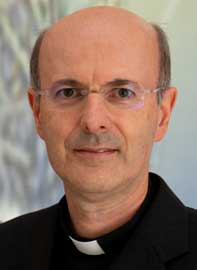
Superiore generale (2022-2028)
Don Domenico Soliman
|
Pubblichiamo in questa pagina quattro foto in alta risoluzione del Superiore generale, Don Domenico Soliman, che possono essere liberamente scaricate e stampate. Ognuna di esse è da considerarsi ufficiale e potrà, a scelta, essere utilizzata nelle sagrestie e nei locali delle comunità. |
||||||
| We publish in this page four high resolution photos of the Superior General, Fr. Domenico Soliman, that can be freely downloaded and printed. Each photo is to be considered as official and can, at your option, be used in the sacristies and rooms of the communities. | ||||||
 |
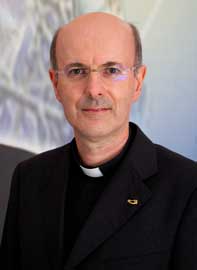 |
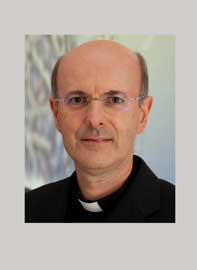 |
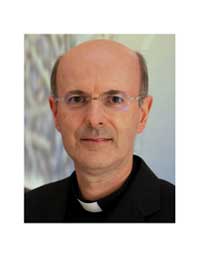 |
|||
| Foto Ufficiale | Opzionale 1 | Opzionale 2 | Opzione 3 | |||
SEGRETARIO GENERALE 0
Informazione 173
![]() Sezione RISERVATA ai membri della Società San Paolo. LOGIN col nome di utente e password nel modulo sopra a destra per favore.
Sezione RISERVATA ai membri della Società San Paolo. LOGIN col nome di utente e password nel modulo sopra a destra per favore.
San Paolo Bollettino 59
![]() Sezione RISERVATA ai membri della Società San Paolo. LOGIN col nome di utente e password nel modulo sopra a destra per favore.
Sezione RISERVATA ai membri della Società San Paolo. LOGIN col nome di utente e password nel modulo sopra a destra per favore.
Agenda del Governo 25
![]() Sezione RISERVATA ai membri della Società San Paolo. LOGIN col nome di utente e password nel modulo sopra a destra per favore.
Sezione RISERVATA ai membri della Società San Paolo. LOGIN col nome di utente e password nel modulo sopra a destra per favore.
Stato Personale 12
![]() Sezione RISERVATA ai membri della Società San Paolo. LOGIN col nome di utente e password nel modulo sopra a destra per favore.
Sezione RISERVATA ai membri della Società San Paolo. LOGIN col nome di utente e password nel modulo sopra a destra per favore.
ORGANIZMI INTERNAZIONALI 0
CAP-ESW 20
CAP-ESW is an organization of the Society of St Paul for all the circumscriptions in the Asia Pacific Region and the English Speaking World (Australia, India-Nigeria, Japan, Korea, Philippines-Macau, UK-Ireland, and the United States of America) where the Congregation is present or exercises its mission.
CIDEP 76
El Centro Iberoamericano de Editores Paulinos (CIDEP) es un organismo de la Sociedad de San Pablo para todas las Circunscripciones de Iberoamérica donde los Paulinos desarrollan su actividad apostólica.
SITIO: http://www.paulus-cidep.org/
CTIA 66
Il CTIA (Comitato Tecnico Internazionale per l’Apostolato) viene costituito - il 14 novembre 1988 - per assistere e cooperare con il Governo Generale per coordinare efficacemente l’apostolato a livello nazionale e internazionale, con particolare attenzione ai progetti orientati alla multimedialità; presentare o valutare progetti apostolici che abbiano rilevanza plurinazionale; collaborare con il Governo Generale nella formazione dei responsabili dell’apostolato, studiando e suggerendo le forme, tempi e luoghi più opportuni nelle diverse situazioni storico-ambientali.
| MEMBRI DEL CTIA | ||||
| Comitato Tecnico Internazionale per l'Apostolato | ||||
| Questo indirizzo email è protetto dagli spambots. È necessario abilitare JavaScript per vederlo. | ||||
| STATUTO: ITA - ESP - ENG | ||||
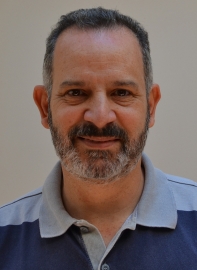 |
||||
| DON VALDECIR UVEDA Presidente |
||||
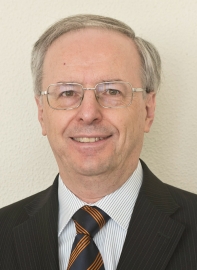 |
||||
| FR. LORENZO VEZZANI Consigliere generale |
||||
CiSP 1
Centro internazionale di Spiritualità Paolina
GEC 25
Il Gruppo Europa - Congo è un organismo della Società San Paolo composto dalle Circoscrizioni paoline d’Europa: Provincia Italia, Provincia Spagna, Regione Canada-Francia, Regione Gran Bretagna-Irlanda, Regione Polonia, Regione Portogallo, Delegazione Germania.
SIF - Promozione e Formazione 54
Il Segretariato Internazionale per la Pastorale Vocazionale e la Formazione (SIF) è un organismo internazionale al servizio del Governo Generale della Società San Paolo per quanto concerne la promozione vocazionale e la formazione. È stato costituito dallo stesso Governo Generale in attuazione di quanto ha stabilito l’VIII Capitolo Generale della SSP, nella Linea operativa 2.2.1: “Il Governo generale crei un ‘Segretariato Internazionale’ per animare, coordinare e verificare il lavoro della pastorale vocazionale e della formazione di base e permanente nelle Circoscrizioni”.
| MEMBRI DEL SIF | ||||
| Segretariato Internazionale per la Pastorale Vocazionale e la Formazione | ||||
| STATUTO: ITA - ESP - ENG | ||||
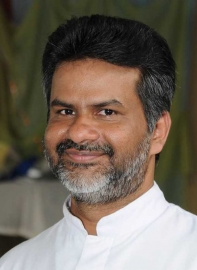 |
||||
|
DON JOHNSON CHACKO VATTAKUNNEL Presidente |
||||
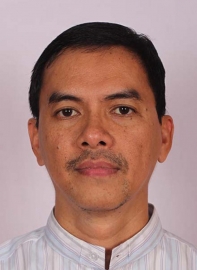 |
||||
|
DON ALAN GAMUTAN Consigliere generale |
||||
SOBICAIN 10
ANNO PAOLINO 0
100 ANNI 0
FAQ 0

Dalla lista seguente scegli un argomento, poi seleziona una domanda per vedere la risposta. Se hai delle domande da sottoporre, che non trovi in questa sezione, contattaci.









